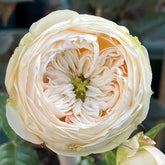The Best Time to Transplant Roses: A Gardener’s Guide to Success
by
SmithZoe
30 Oct 2025
Transplanting roses can feel daunting—after all, you want to avoid shocking your plants or stunting their growth. But here’s the good news: get the timing right, and your roses will settle into their new home smoothly, blooming beautifully in no time. I’m breaking down the best time to transplant roses, key tips for preparation and aftercare, and how to avoid common mistakes—so you can move your roses with confidence.
What’s the Best Time to Transplant Roses?
The short answer: during dormancy or early spring, before new growth starts. Roses are hardier when they’re not actively growing, making this window the safest for minimizing stress. Let’s break it down by climate and season to make it even clearer:
1. Late Fall to Early Winter (Dormancy) – Ideal for Most Climates
The absolute best time to transplant roses is when they enter dormancy—usually from late fall (after the first light frost) to early winter. At this point:
- Roses have stopped producing new leaves and blooms, so their energy shifts to the roots.
- The soil is still workable (not frozen), letting you dig up the root ball without damaging it.
- Transplanting now gives roots months to establish themselves before spring’s growth spurt—meaning your roses will bounce back faster when warmer weather hits.
Just note: If you live in an area with extremely cold winters (where the ground freezes solid for months), aim for late fall (before the first hard frost) to avoid dealing with frozen soil.
2. Late Winter to Early Spring – A Great Backup Option
If you miss the fall window, late winter to early spring (before buds start swelling) is the next best time. This works because:
- Roses are still dormant, so they’re less likely to suffer from root damage.
- You’ll beat the rush of new growth—transplanting after buds break or leaves emerge can tear new roots, leading to wilting, yellowing, or stunted growth.
For warmer climates (where winters are mild), late winter is often easier than fall—you won’t have to worry about unexpected early frosts damaging newly transplanted roses.
When to Avoid Transplanting Roses
Steer clear of these times at all costs:
- Summer (hot, dry weather): High temperatures stress roses, and transplanting now can cause severe wilting or even death—roots can’t absorb water fast enough to keep up with heat loss.
- Active growth periods (spring blooms to early fall): Roses are using all their energy to produce flowers and leaves; disrupting roots now will set them back drastically.
- Extreme weather: Frozen soil (can break roots), waterlogged soil (causes root rot), or heatwaves (dries out roots) are all transplant killers.
Step-by-Step Tips for Successful Rose Transplanting
Timing is key, but proper technique ensures your roses thrive post-transplant. Follow these steps:
Before Transplanting: Prep the Plant and Soil
- Water the rose thoroughly 1–2 days before: This loosens the soil around the root ball, making it easier to dig up without breaking roots. Dry soil can cause roots to snap, which weakens the plant.
- Choose the new spot wisely: Roses need 6+ hours of direct sunlight daily, well-draining soil, and space (3–4 feet apart for shrub roses, more for climbers) to avoid overcrowding.
- Prepare the new hole: Dig a hole 2–3 times wider than the rose’s root ball and just as deep. Mix in compost or aged manure to enrich the soil—this gives roots a nutrient boost to grow strong.
During Transplanting: Handle with Care
- Dig up the root ball gently: Use a sharp spade to dig a circle around the rose (12–18 inches from the base for shrub roses, wider for larger varieties). Angle the spade slightly inward to scoop up as much of the root system as possible—roses have shallow, spreading roots, so the bigger the root ball, the better.
- Trim (if needed): Remove any dead, diseased, or broken branches—this reduces stress on the plant and lets it focus on root growth. Avoid heavy pruning, though; save that for late winter.
- Plant at the right depth: Place the rose in the new hole so the graft union (the swollen area where the rose is grafted to the rootstock) is 1–2 inches below the soil surface (this prevents it from drying out or freezing). Fill the hole with soil, gently tamping down to remove air pockets.
After Transplanting: Give Your Roses TLC
- Water deeply immediately: This settles the soil around the roots and ensures they stay hydrated. Keep the soil moist (but not waterlogged) for the first 2–3 weeks—aim for 1 inch of water per week, either from rain or hand-watering.
- Add mulch: Spread a 2–3 inch layer of mulch (wood chips, straw, or compost) around the base of the rose. This retains moisture, suppresses weeds, and regulates soil temperature—critical for new roots.
- Fertilize (but not right away): Wait 4–6 weeks after transplanting to fertilize. New roots are sensitive, and early fertilization can burn them. Use a balanced rose fertilizer once growth starts in spring to support blooms.
Post-Transplant Care: What to Expect
Don’t panic if your rose looks a little “sad” after transplanting—some mild wilting or leaf yellowing is normal (it’s called “transplant shock”). Here’s how to help it recover:
- Keep watering consistently: Moist soil is your best friend—dry soil will worsen shock.
- Shield from extreme heat: If you transplanted in early spring and a late frost or heatwave hits, cover the rose with a frost cloth or shade cloth temporarily.
- Skip deadheading early: Let any early blooms fade naturally—pinching them off too soon can stress the plant. Focus on root growth first, then blooms will follow.
Final Thoughts: Transplanting Roses Made Easy
The best time to transplant roses is during dormancy (late fall to early winter) or early spring (before growth starts)—this minimizes stress and sets roots up for success. With a little prep work (watering, soil enrichment) and gentle handling, your roses will adapt to their new home and reward you with lush blooms in no time.
Remember: Roses are tougher than they look—get the timing right, and you’ll be enjoying your transplanted roses for years to come.














